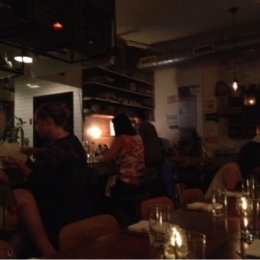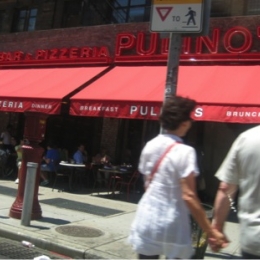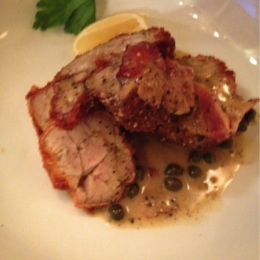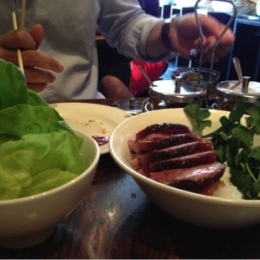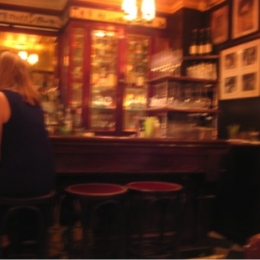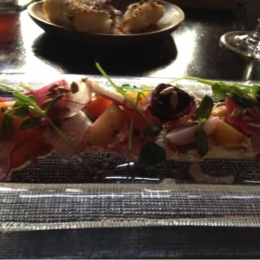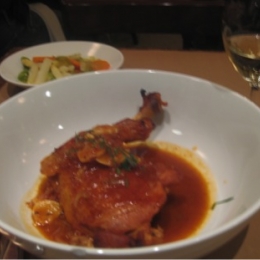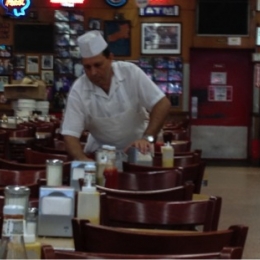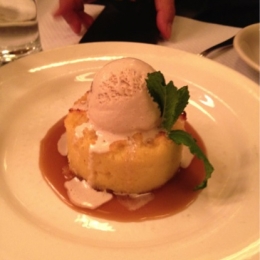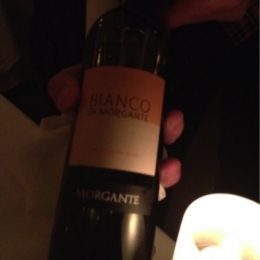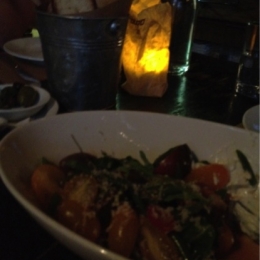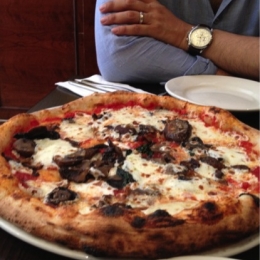For a while, it seemed like the cool thing to doubt whether a new pizza-themed restaurant attempting to take on the NY greats—Lucali, Roberta’s, Di Fara, Paulie Gee’s, Luzzo, Totonno, Keste, Motorino—in a city that knows and reveres its pizza, would even survive its first three months, let alone its first year. Especially when it would bear the San Francisco zeal, from the otherwise redoubtable A16, the former kingdom of Nate Appleman’s and a much-lauded SF institution.
But there is another operative force, and it’s not A16 or Nate Appleman. It is Keith McNally. As with his earlier establishments, he plonked his latest creation, Pulino’s, down at a crumbling corner between Bowery and the dreary E. Houston St and brought it back to life. And not just that—he changed the pulse and the fortunes of the neighborhood. He made it cool. He made it happening.
The thing about Pulino’s I keep forgetting is that it isn’t just a ‘pizzeria and bar’ as the signage screams; it is a restaurant—and not a bad one at that. And it is a restaurant quite unlike any of its proprietor’s earlier experiments in that it features an open and busy kitchen, helmed by an out-of-towner, from which they do all the butchering, shaving and meat curing, and out of which all energy seems to emanate. And it is decidedly not French.
Moreover, beyond the trademark McNallyisms designed to make you a bit lightheaded when you enter—the checkerboard floor, the distressed metal-fest, the gleaming backlit liquor-covered walls, the deep golden glow, the general glitz and polish—there are some seriously good pizzas to be had: thin-crusted, char-kissed, the right side of chewy.
And yet. Just as I thought there was nothing that McNally couldn’t do (a red hot neo-speakeasy? Easy peasy. A French brasserie or two? Mais oui. A modern pizzeria with a strong locavore approach? Molto bene, let me show you!), he announced, barely two weeks ago, that he would be closing down Pulino’s at the end of the year in favour of another French-themed joint called Cherche Midi. As for Nate? He has been gone since 2010. (The pies are no longer ovoid.) There is a sense that McNally is preempting what many of Pulino’s early detractors might have seen as a project doomed to failure.
When we dropped in for early lunch, on a suitably apocalyptic Friday the 13th, merely hours before I was due to give a talk I wasn’t quite looking forward to, at neighboring NYU, I was too late for my breakfast favorite of roasted grapefruit with muscovado sugar and mint. So, as is typical of distressed people pressed into making other choices except the one they really wanted to de-choose, I tipped over and ordered the margherita pie, the funghi pizza on account of my funghi-loving husband, and one of the decadent breakfast pizza spillovers, the pancetta affumicata, which is another term for crème fraiche, caramelized onions, eggs AND bacon, (just because we could). All three were satisfying, if merely serviceable, and certainly not in the way they were when Nate Appleman was still captain of the kitchen.
The thing is, I am no stranger to Nate Appleman’s pies, having dined at A16 in 2009 during my five-day binge in San Francisco. When I first ate at Pulino’s, two or three months after they opened, I was almost moved to tears to find his special brand of SF sunny, laid back sophistication transposed into this moodiest of cities. Yet I’d always thought him best when given something truly powerful like pork strutto (that’s lard to me and you), and fewer ingredients to work with, such as mozzarella or pecorino, say, finished with something as deceptively mundane as black pepper. (I miss that pizza—it was called bianca tradizionale.)
It was in that manner that he shone, and it was often about a simple but intelligent pairing of smoky, salty and sweet: chicharonnes tempered with pear mostarda, a happy union of red cabbage, pancetta, oranges, honey and pecorino, smoked sablefish with bottarga dressing. Even his panna cotta had a hint of the sweet and smoky, resting as it once did, so memorably, on a plash of burnt honey.
But now the dishes on offer are even more rustic, bordering on generic, which is not to say that it is bad—only less risky. Perhaps it is this very soberness that allows for a surprisingly near-flawless roast chicken with romesco sauce, one of the best I had on this trip, and one I will lament when Pulino’s sheds its quasi-Neapolitan pretentions to become yet another Lutetian paean.

